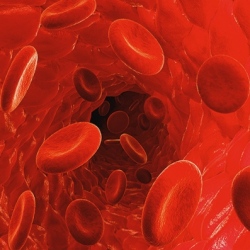
A groundbreaking new wearable designed to be worn on the throat could be a game changer in the field of stroke rehabilitation. The sensors stick directly to the skin, moving with the body and providing detailed health metrics including heart function, muscle activity and quality of sleep.
“Stretchable electronics allow us to see what is going on inside patients’ bodies at a level traditional wearables simply cannot achieve,” Rogers said. “The key is to make them as integrated as possible with the human body.”
Rogers’ new bandage-like throat sensor measures patients’ swallowing ability and patterns of speech. The sensors aid in the diagnosis and treatment of aphasia, a communication disorder associated with stroke.
The tools that speech-language pathologists have traditionally used to monitor patients’ speech function – such as microphones – cannot distinguish between patients’ voices and ambient noise.
“Our sensors solve that problem by measuring vibrations of the vocal cords,” Rogers said. “But they only work when worn directly on the throat, which is a very sensitive area of the skin. We developed novel materials for this sensor that bend and stretch with the body, minimizing discomfort to patients.”
Shirley Ryan AbilityLab, a research hospital in Chicago, uses the throat sensor in conjunction with electronic biosensors – also developed in Rogers’ lab – on the legs, arms and chest to monitor stroke patients’ recovery progress. The intermodal system of sensors streams data wirelessly to clinicians’ phones and computers, providing a quantitative, full-body picture of patients’ advanced physical and physiological responses in real time.
“One of the biggest problems we face with stroke patients is that their gains tend to drop off when they leave the hospital,” said Arun Jayaraman, research scientist at the Shirley Ryan AbilityLab and a wearable technology expert. “With the home monitoring enabled by these sensors, we can intervene at the right time, which could lead to better, faster recoveries for patients.”
Because the sensors are wireless, they eliminate barriers posed by traditional health monitoring devices in clinical settings. Patients can wear them even after they leave the hospital, allowing doctors to understand how their patients are functioning in the real world.
